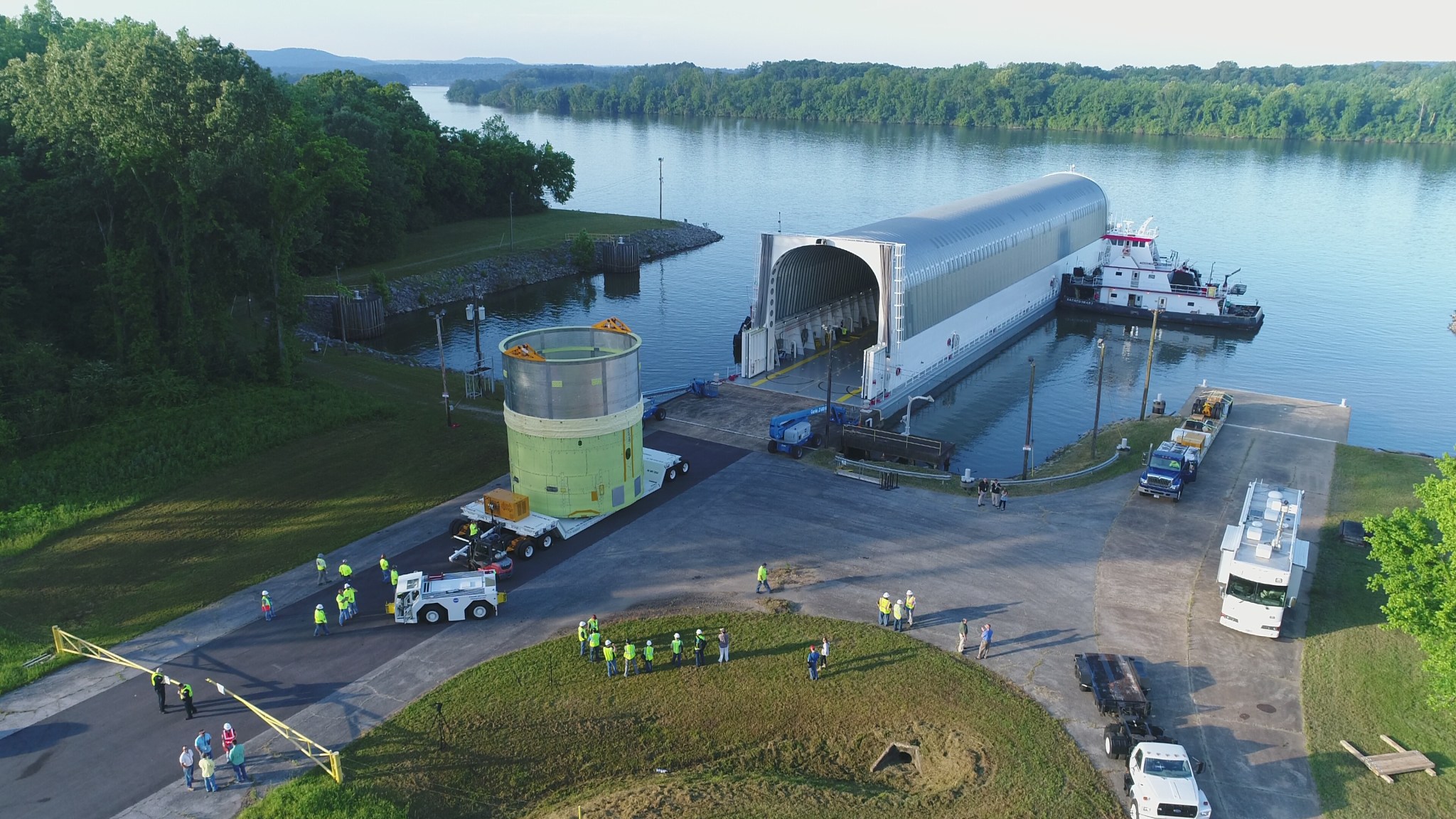
Media are invited to view the engine section structural test article and test stand for NASA’s Space Launch System, the world’s most powerful rocket, at 8 a.m. CDT, Friday, May 19, at the agency’s Marshall Space Flight Center in Huntsville, Alabama.
The engine section is first major SLS hardware manufactured at NASA’s Michoud Assembly Facility in New Orleans to arrive at Marshall for testing after a 1,240-mile journey by river on the barge Pegasus. The delivery marks a critical milestone toward the first integrated flight of the SLS rocket and NASA’s Orion spacecraft. Media will have the opportunity to see the engine section and the test stand where it will be tested and to interview NASA officials.
Media interested in attending should contact Tracy McMahan in Marshall’s Office of Communications at 256-544-0034 no later than 5:00 p.m. CDT, Thursday, May, 18. Media must report to the Redstone Arsenal Joint Visitor Control Center at Gate 9, Interstate 565 interchange at Research Park Boulevard by 7:30 a.m. CDT, Thursday, May 16. Reporters will be able to get a close-up look at the engine section and the test stand and interview NASA officials involved in testing. This event is located in a test area, so media must wear long pants and closed-toe shoes with heels no higher than two inches. Vehicles are subject to a security search at the gate. Photo identification and proof of car insurance is required.
The flight engine section will house the four RS-25 engines that will power the SLS rocket’s core stage. It is also one of the attach points on the core stage for the rocket’s two solid rocket motors. The test article has a structure designed to the same specifications as the engine section that will fly on the SLS rocket’s first flight.
The engine section is the first of four core stage test articles that will undergo extensive testing at Marshall. Engineers will push, pull and bend the hardware to ensure it can withstand the extreme forces the rocket will experience during launch, liftoff and flight. The tests along with analytical models and other data will show that the design of the engine section is structurally sound.
For more information on the SLS structural loads testing, visit:
For photographs and B-roll of SLS engine section and the Pegasus, visit:
https://images.nasa.gov/#/details-Pegasus_ES_b-roll_May_16_2017.html
Tracy McMahan
Marshall Space Flight Center, Huntsville, Alabama
256-544-0034
tracy.mcmahan@nasa.gov


























